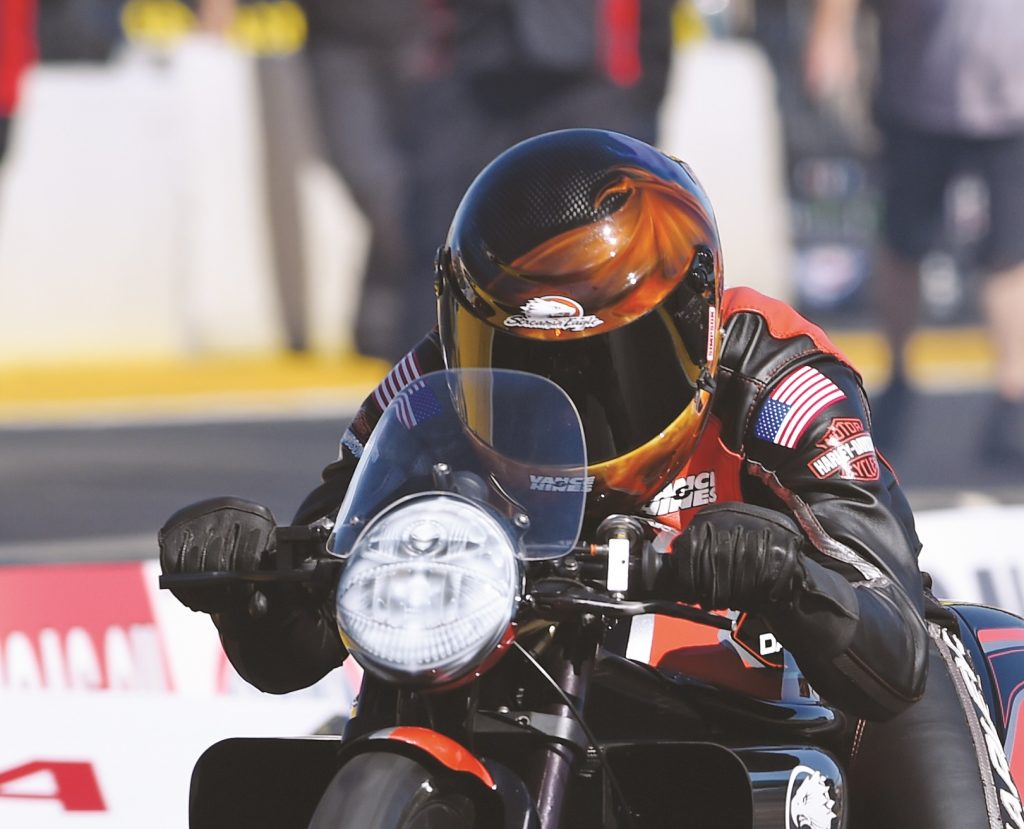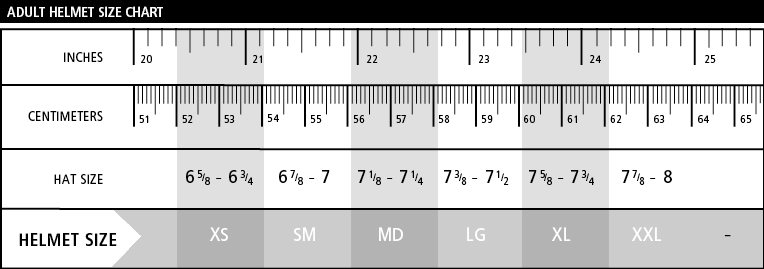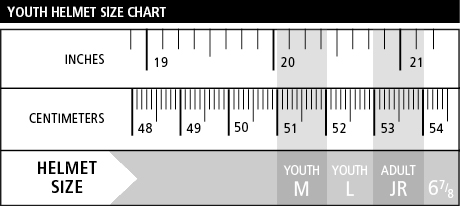
(Image/Summit Racing – Auto Imagery)
While SFI specifications are the thing by which most auto racing safety equipment is measured, your helmet is a different animal.
Helmets are rated by the Snell Memorial Foundation, and in most instances, a helmet’s Snell specification will dictate whether it is suitable for a particular racing application, or allowed by a motorsports sanctioning body.
Snell releases new ratings every five years. It is common for racing organizations to allow use of helmets with both the current and previous specification — meaning a Snell 2010 helmet may be allowed in your league, but you are ultimately responsible for determining what safety equipment is required and appropriate for your particular brand of racing.
This is another instance in which reading the rulebook carefully is not just worth your while, but strongly encouraged.
In drag racing, the respective rule books for NHRA and IHRA, as well as smaller racing organizations, have those details. For circle track racing, different rules and requirements are specific to each racetrack.
There is a difference between DOT-approved and Snell-approved helmets. Most racing classes won’t accept helmets approved solely by the Department of Transportation.
A Primer on Snell Ratings
There are three different classifications for Snell-rated helmets:
Snell SA Helmets (designated as Snell SA2015 or SA2010)
SA stands for Sports Application. SA-rated helmets are professional-grade. They are designed for auto racing and provide the highest levels of impact resistance and fire protection.
Snell M Helmets (designated as Snell M2015 or M2010)
M stands for Motorcycle. M-rated helmets are designed specifically for motorcycle racing and similar motorsports, and offer less protection than SA-rated helmets.
Snell K Helmets (designated as Snell K2015 or K2010)
K stands for Karting. K-rated helmets are designed for karting applications and meet the same impact standards of SA helmets, but not the same level of fire-retardant protection.
Some differences between SA- and M-rated helmets include:
- Snell’s SA standard requires flammability testing. The M-rated standard doesn’t.
- SA-rated helmets pass a roll bar impact test. The M-rated helmets aren’t put through that test.
- The SA standard allows a narrower field of vision than the M standard. Some SA helmets aren’t street legal for this reason.
…
Helmet Design Overview
Helmet design and use is determined primarily by four features:
- Field of vision
- Internal lining
- Face shield material
- Ventilation
Field of vision is a major influence in what a particular helmet design is used for. Typically, circle track and motorcycle helmets will have a much wider field of vision than a drag racing helmet.
Most racing helmets have a fire-retardant Nomex liner, but not all. This may factor into whether a particular helmet is acceptable for certain motorsports events or racetracks.
Most face shields are made from polycarbonate, a glasslike polymer that offers transparency, toughness, flexibility, scratch resistance, and ultra-violet light screening — all of which must pass Snell’s testing procedures.
A downside to a good helmet’s insulating properties is that it will trap heat — affecting both driver comfort and his or her ability to breathe.
Drivers wearing a helmet for long stretches should have a helmet with a fresh-air system. Low oxygen levels speed up driver exhaustion, and driver exhaustion slows down race cars.
Unique to most endurance racing applications, driver air systems are designed to pump fresh air into the driver’s helmet. If you’re a road racer or circle track driver, you know about these already.
Some racing classes now require helmet restraints or head and neck restraint systems that limit a driver’s head movement during an impact (we’ll have a separate post on these). If you’re buying a helmet for use with a restraint system, you’ll need one with the proper attachment points. Helmets that meet these requirements will have a SAH2015 Snell rating and not the standard SA2015 rating.
Choose a Helmet That Fits
“A correctly fitted helmet should feel as if an evenly distributed pressure is continuously being exerted around the head and cheeks. Helmets, like shoes, will break in. For this reason, the helmet should fit as tight as you can stand to wear it,” according to the helmet experts at Simpson. “Once fastened, make sure the helmet cannot be pulled off of the head in any direction. If the helmet moves significantly, the helmet is too big. First time helmet buyers tend to choose helmets that are too loose or too big. If the helmet does not fit well, it cannot deliver the level of protection you need.”
Here are Simpson’s adult and junior helmet size charts to help you choose a helmet that’s right for you or your vehicle’s driver.



[…] competition-approved helmets now come pre-drilled for HANS Devices (learn more about choosing a helmet here). If yours does not, you’ll need to drill holes in the proper locations using the […]
[…] helmet with a scheduled expiration date of Jan. 1, 2027. You can read more about helmets in our Racing Helmets 101 post. It provides an overview of Snell ratings and covers some of the different helmet designs that are […]
Helmets need to fit very specifically in order to be safe in a crash situation. As the size and shape of your head is unique to you, it is sometimes necessary to try on several helmets in a shop before making a final decision of purchasing.
Are 2015 helmets still the SCCA Standard?
Thanks for the information!!
[…] we’ve covered this topic before in our Racing Helmets 101 article, the video below from Summit Racing goes into a bit more detail, and gives you a nice […]
I have a SA 2015 Helmet that has never been damaged. How long is that rating good for?
Hey Paul–if you’re talking about Snell ratings, they’re updated every five years. While all sanctioning bodies differ, many specify current or one prior iteration (SA2020 is current, with SA2015 being the previous) or, in other words, 10 years. But you should check with your particular sanctioning body to make sure.
…
But Snell also recommends changing to a new helmet every five years. That’s often because helmets are subject to regular wear that can degrade the foam compression lining. Snell’s got a handy FAQ you can check out too.
…
While this article is written from a motorcyclist’s perspective, it covers some more universal topics and may be worth the read: Head Exam: How & Why You Should Regularly Inspect Your Motorcycle Helmet